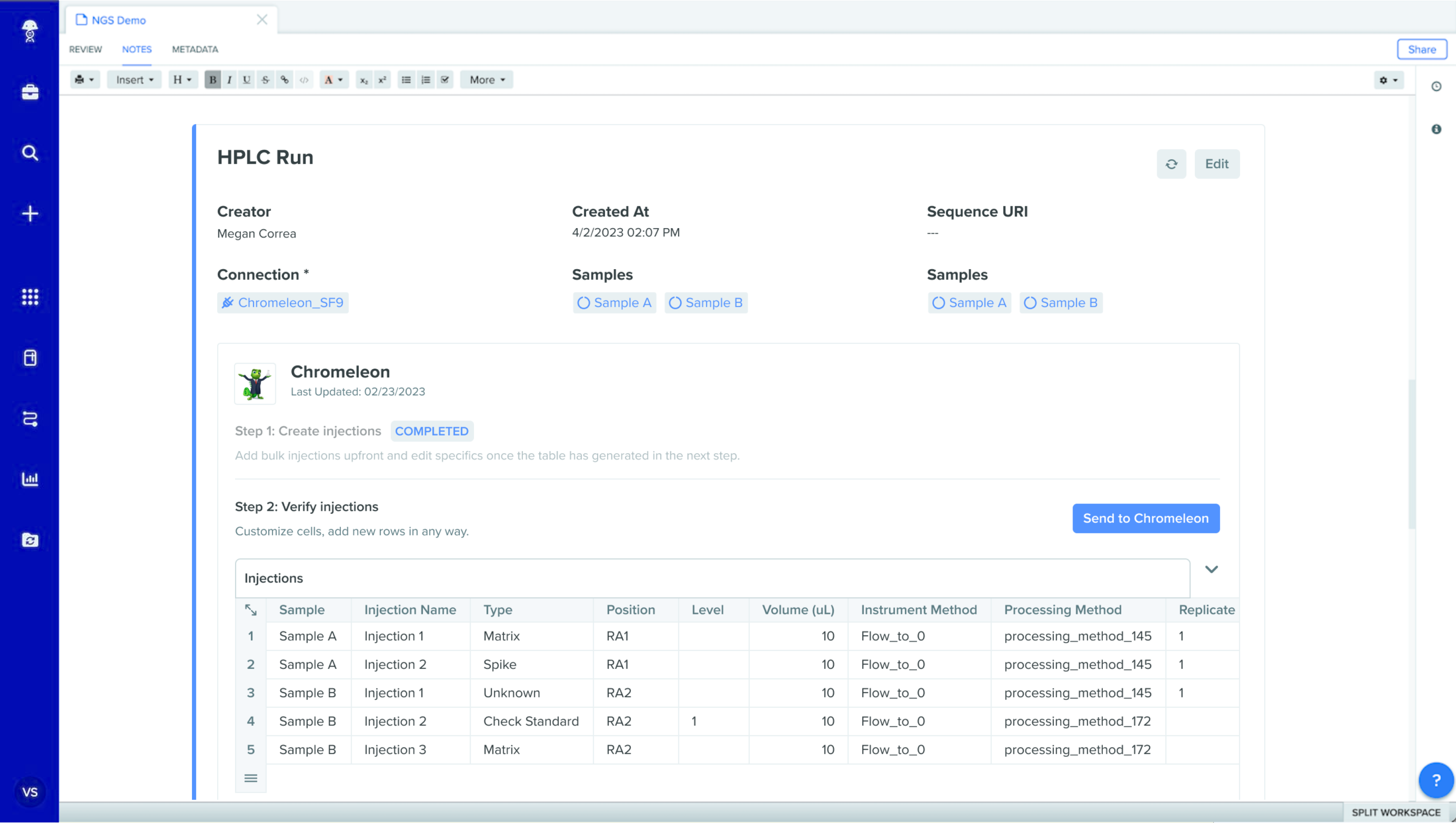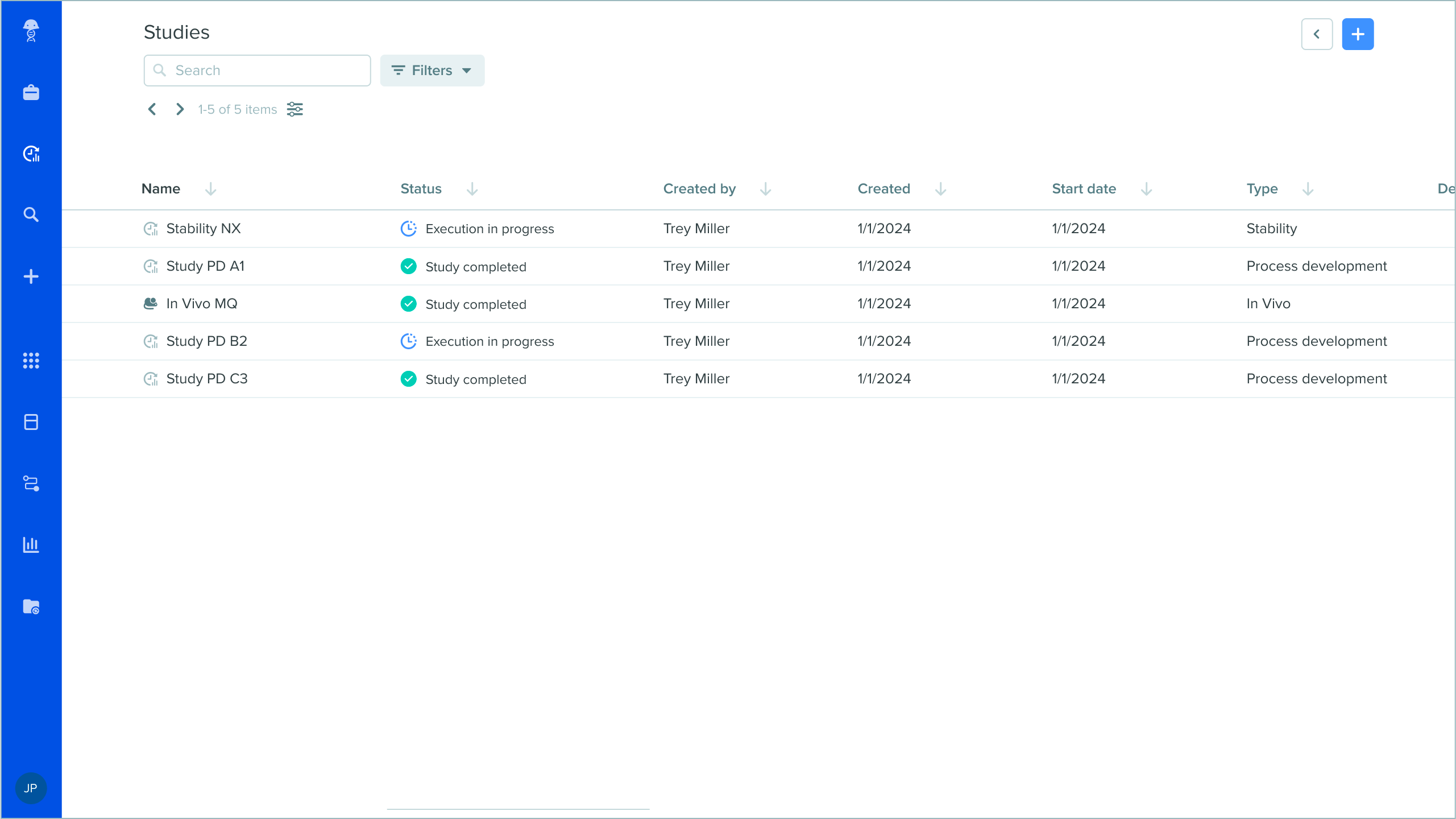A guided tour of the newest Benchling innovations

We know there's a tremendous amount of work that happens between discovery and the introduction of a drug to market, spanning research, development and manufacturing — it’s a long, winding road. At Benchling, we believe that with modern software, it’s possible to shorten that distance and remove some of the bumps in the road. This year, we wanted to better understand the opportunities and challenges for technology in R&D. So we did an industry-first survey. In it, we talked to 300 biopharma experts and learned that science, data, and collaboration are all becoming more complex, introducing novel challenges for R&D.
We know we can’t solve all these challenges today, but we do have a vision of how we can help close some of the gaps. That’s why we’re excited to share more about how our latest products and features can help your organization accelerate R&D.
Watch the on-demand replay of our What’s New webinar in the Americas or Europe to learn more! →
New products hot off the press
Benchling Connect
Benchling Connect is a flexible, open data platform built to help increase your R&D throughput and accuracy. It provides end-to-end data management — letting you connect, manage, and analyze data from all the lab instruments and data analysis tools you rely on.

How Benchling Connect helps your organization:
Integrate with your lab instruments. With Benchling Connect, teams can capture instrument data using a library of instrument adapters. Connect supports out-of-the-box connectors for a growing library of instruments, as well as generic file converters to cover edge cases and unique data requirements.
Centralize and access all the data you collect. Standardize, enrich, and drive adoption of instrument data models with a truly open source library. By posting these data converters in a public Github repository, it makes it possible for others to contribute and customize. We’re also using the industry standard Allotrope Simple Model, ASM, to reduce the proliferation of proprietary data models.
Accelerate scientific analysis. Unify your data by integrating with analytics and AI/ML. Benchling Connect meets R&D needs by automating result capture, delivering application-agnostic scientific analysis, and AI/ML-based cross platform insights. For IT teams, downstream integration, context-driven searchability, and easy accessibility and provenance support overarching data strategies.
Benchling Connect capabilities:
Browse and search. With Benchling Connect, customers can truly manage their scientific data in one place. Because Benchling uniquely models and tracks scientific data and metadata, R&D teams can browse, search, and connect ingested data easily to Notebook entries, Results tables, and more. (Coming Early 2024)
SQL data warehouse access. Benchling Connect makes it easy for customers like you to accommodate their growing data storage needs. Benchling takes a data-agnostic approach, so our customers can quickly connect to the platform whether they have their own data lake (e.g., Snowflake) or need Benchling to provide one (e.g., data warehouse).
API and file-based instrument integrations. Easily connect key instruments with Benchling, using simple file-based or API-based integrations. These instrument integrations cover 12 models across 7 categories.
Interactive app connectivity. Once you’ve connected your lab instruments to Benchling, a built-in, app-based interface allows customers to automate the processing of instrument and other R&D data. This eliminates the need for complicated and customized transformations to prepare or clean data for analysis.
Benchling Bioprocess
Benchling Bioprocess is the only cloud-native solution that provides an end-to-end solution for modern, high-throughput process development. It helps development teams accelerate their path to critical milestones, while increasing operational efficiency and simplifying technology transfers into manufacturing. Bioprocess provides a visual process designer, guided process execution, and pre-built instrument integrations, all with a modern, easy-to-use interface that promotes fast and accurate data collection.

Watch the Benchling Bioprocess demo.
How Benchling Bioprocess helps your organization:
Automate data management at scale. Bioprocess provides an easy-to-use visual interface to define processes and run multi-factor experiments, ensuring the data you collect becomes part of a structured data foundation. Pre-built instrument connectors and native workflows orchestration minimize transcription errors, accelerate data capture, and ensure clear handoffs.
Simplify tech transfer. Bioprocess ensures efficient collaboration using a structured, ISA88-compatible recipe data model. A centralized, structured database provides complete traceability across process recipes and data, reducing the likelihood of having to repeat experiments.
Enable data science. Benchling’s unified data model maintains links between process and analytical data, eliminating data silos. Bioprocess collects structured data, interoperable through ISA-88 and ASM standards, that can feed into data science platforms and machine learning pipelines to generate process insights.
Benchling Bioprocess capabilities:
Visual recipe design. With Benchling’s intuitive, visual designer, teams can sequence the order of unit operations, connect material inputs and outputs, and define process parameters, all using a drag-and-drop interface.
Guided batch execution. Quickly move your recipe designs and experiments into guided batch execution, with instructions dynamically populated from the recipe definition. Run experiments in parallel, collect data at each process step, collaborate across teams, and track overall progress, while saving time from not having to configure batch instructions.
Process insights. Visualize process data with full experimental context and traceability within the Benchling platform. Move structured data from Bioprocess right into 3rd party analysis tools using out-of-the-box connectors (e.g. JMP and Pluto), as well as feed into data lakes and AI/ML pipelines using APIs.
The newest feature improvements
Workflows
Workflows, Benchling’s application to drive R&D processes, is designed for collaboration by connecting lab activities, scheduling experiments, assays, and runs, plus identifying opportunities to optimize workflows end-to-end. We’re continuing to build more complex business logic into our workflows while at the same time making requests more efficient and accurate with structured forms.

Updates to Workflows include:
Designed forms. Requesting just got easier with designed forms. Custom forms can be created for any Workflow Task schema, and once created, are saved and shared via Template Collections. Admins can rename fields, add descriptions and hide fields to create an easier to understand form for requestors. And don’t fear—the table view will still be an option that users can choose, with the ability to switch between table and form view with no data loss.
Conditional routing. Create smarter, more efficient workflows with automated routing decisions based on business logic or scientific criteria. Custom Routing improves compliance by consistently applying a set of rules without manual intervention. Users can configure flowcharts that automatically route samples using logic based on their properties, results, or other Benchling data. (November 2023 - April 2024 | LA available today)
Workflow looping. Workflow looping accelerates redo decisions by automatically looping back a previous step based on conditional logic. If a sample doesn’t pass a quality control check, for example, automatically route it back to an earlier step and create a new task, rather than requiring the user to do that manually. (November 2023 - April 2024 | LA available today)
Studies
To help speed up and centralize study management, Benchling is releasing studies functionality, which allows you to model your studies in Benchling in a way that links together relevant entities, tasks, and analytics.

Benchling’s enterprise-ready in vivo solution helps organizations:
Accelerate in vivo study startup. Quickly establish repeatable study designs with an intuitive user interface. Use randomization algorithms with multi-parameter exclusion to eliminate bias in animal selection.
Capture accurate, intelligent in-life study data. Automate repetitive tasks and reduce transcription errors with USB/Bluetooth instrument integrations. Stay on top of your studies with task templates, alerts, real-time graphs, and survival plots.
Drive collaboration across teams in the Benchling R&D Cloud. Coordinate sample transfers and registration for bioanalysis. Build complete data sets combining in vitro and in vivo data in the Benchling R&D Cloud.
Transforming your R&D with a connected lab
In an era defined by the interplay of biology, data, and AI, biopharma's tech strategy takes on critical importance. The proliferation of technology, however, can pose limits to the data, collaboration, and insights needed to advance science. At Benchling, we’re investing in a connected lab to support the automated flow of instrument data, and ensure experimental data and metadata can be centralized in one open platform.
With the introduction of Benchling Connect and Benchling Bioprocess, and fresh new improvements to our Benchling Bioresearch and Benchling In Vivo products, our purpose built software solves real problems across the entire R&D lifecycle.
Want to explore these innovations further? Check out our What’s New webinar in the Americas or Europe to learn more.